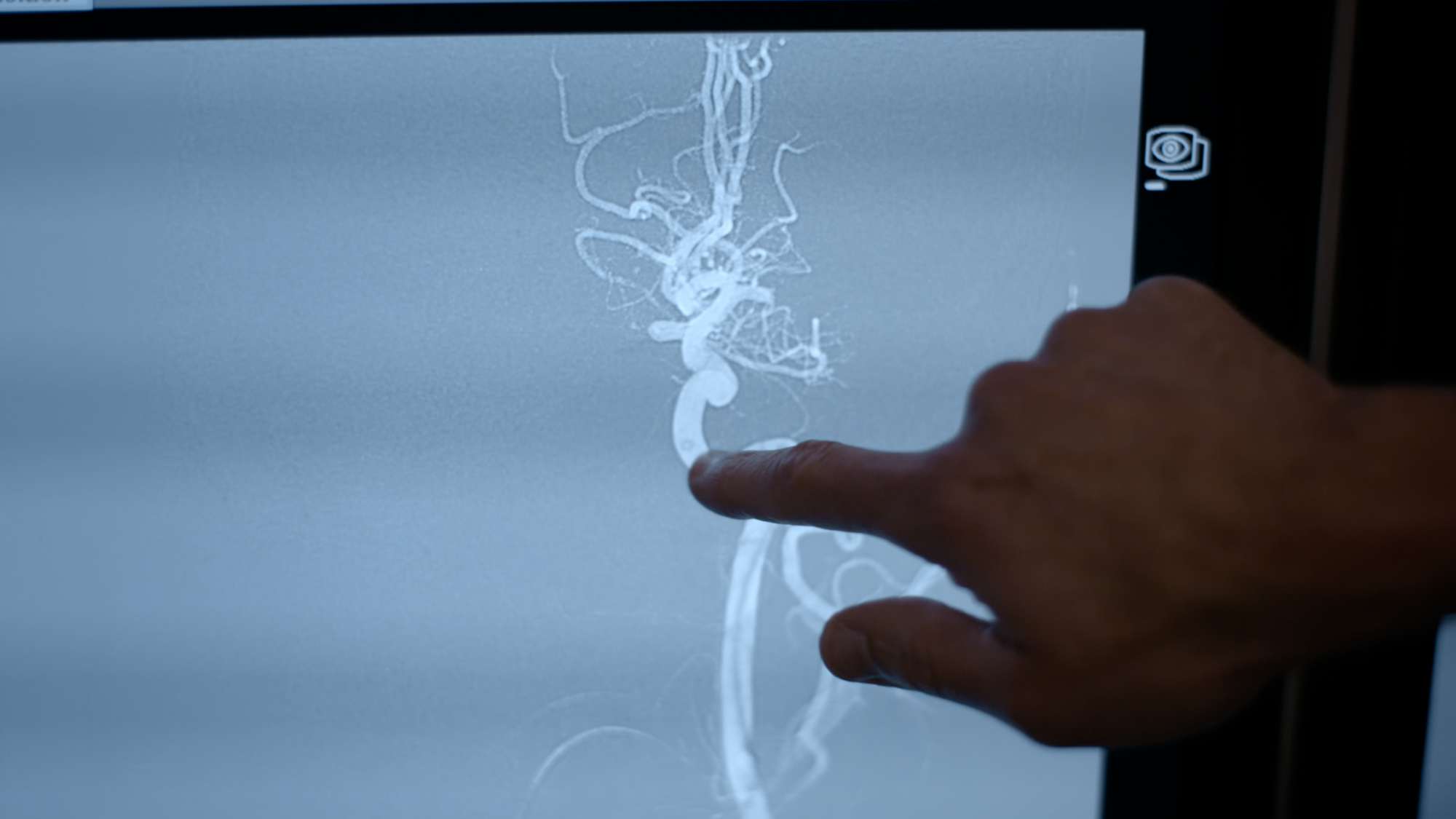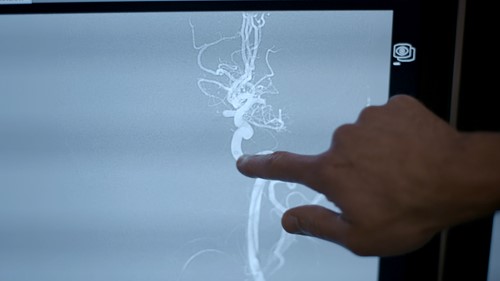Mechanical Thrombectomy
UHNM has been at the forefront of pioneering the revolutionary Mechanical Thrombectomy stroke treatment since 2009.
As one of only two UK sites to have a dedicated 24/7 team, the service has provided specialist care and treatment to more than 500 patients from a potential patient population of three million.
The procedure involves carefully removing blood clots from deep within the brain, using a 3ft-long wire. A stent at the end of the wire envelopes the clot and pulls it out, allowing blood to flow freely to the brain. However, the treatment is only effective in a certain number of patients and with most cases needing to be seen in under 12 hours the importance of a 24/7 team on standby really shines through.
Although this treatment isn't available to all stroke patients, it has already proved to be life-changing for many. Patients with severe strokes previously had a mortality risk of 50%, whereas this treatment has a direct impact on the patient population reducing mortality to 17%, one of the lowest for such severe strokes in the UK.
Speaking about the history of mechanical thrombectomy at UHNM Consultant Interventional Neuroradiologist Dr Sanjeev Nayak said: "We were the first hospital in the UK to provide a 24/7 mechanical thrombectomy service and UHNM has very much been at the forefront of pioneering the procedure nationally.


“One of the biggest highlights since we set up the service came in 2017 when NHS England commissioned the service to be carried out nationally on the back of data and evidence we have submitted.
"When we first started providing the service we had to select patients quite conservatively on a case by case basis, but over time as we've seen the outstanding outcomes for patients and the increasing positive results of clinical trials, the service has now been provided to more than 500 patients. The obvious benefits are that the treatment can provide significantly improved outcomes for patients, reducing the mortality risk from 50% to 17% in patients who have suffered severe strokes. Also, around 90% of patients who have the thrombectomy treatment are discharged to their own home and 23% within a week. Considering these patients have suffered severe strokes, these figures really speak for themselves.
"Another development that we've continued to work on is looking at whether we could extend the time period that the treatment would still be effective within. For example, back in 2009 the procedure was seen as most beneficial for patients who arrived with us within six hours of having their stroke. However, with the help of clinical trials and our own experience, we are now confident that in a select group of patients with specific indicators the treatment can be effective up to 24 hours from the onset of symptoms."
Stroke Physician, Dr Girish Muddegowda plays an integral part of the process which helps stroke patients from the moment they're seen by paramedics through to their post-operation support.
"Stroke management has advanced massively over the past few years and the mechanical thrombectomy treatment has played a huge part in revolutionising the way in which we treat our patients both in terms of their assessment, operation and eventual outcomes.
"Time is very much of the essence when it comes to this procedure and we're very proud with how quickly we're able to treat patients. The average time for a patient to be treated from the time they arrives at A&E to their clot being removed is around 140 minutes, which highlights the commitment from the whole team to providing timely and life-saving treatment for our patients.
"In terms of the recovery, once the procedure is finished they are taken initially to recovery and then to the stroke ward. The difference with thrombectomy is patients who have the treatment are looking at a matter of days in hospital rather than weeks.
"Working on the stroke ward we've had a number of instances where patients' relatives have travelled from a distance to visit their loved one and they can't believe that they have actually suffered a severe stroke, because of how good the recovery can be.
"I'm looking forward to seeing how the service continues to develop and how we can potentially help other hospitals in the country set up their own thrombectomy service using UHNM as an example."